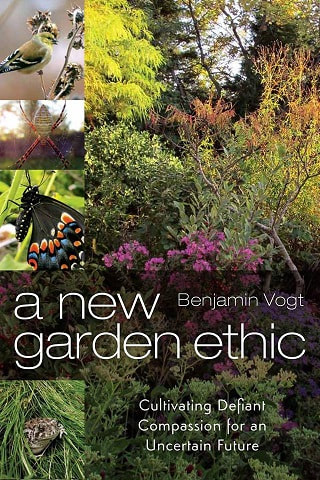Don't pull weeds if you can help it. What happens when you do?
1) You expose dormant weed seeds embedded in the soil that come up with that weed, and then they germinate and you have more weeds.
2) That wound in the bed, full of exposed soil, is the perfect growth medium for a weed seed to blow in on and germinate.
Just as in site prep as in weeding, the less disturbance you can create in the soil the better. This is why we are not advocates of tilling or sod cutting.
Sometimes it's best to deadhead weeds as they flower, especially if they are annuals like foxtail, either by hand or mowing; often in the first year of a meadow or prairie garden, mowing keeps weeds down and prevents them from competing with the native plants while the latter work on roots. Some deeply-taprooted, perennial weeds won't even budge, and you might have to kill them via other targeted means.
As for dandelions, let's welcome them in our beds. Not so much because they provide a good nutritional source of pollen for bees (they don't), but because they provide a solid green mulch and their taproots help open up clay soil. Green mulch is the key, because we don't tend to see wood mulch in prairies -- and there's a reason for that. Wood mulch can never work as effectively as green mulch, and can certainly never create the kind of ecosystem function (think runoff mitigation) or habitat that plants can. A densely layered garden is shading out weed seedlings while taking soil nutrients away from weed seedling's roots -- there's just no room to get a foothold.
We design gardens to get as much green cover as soon as possible. This may mean planting on 10-12" centers, or combining seeding with plugs. The latter looks like this: we design drifts and masses of forbs by planting plugs, then we sow in a matrix grass often alongside annuals and biennials. Sowing annual flowers with the matrix grass means we get even more cover sooner, but we also have some first year color since even perennial plugs will take a year or three to bloom. On some sites with very aggressive perennial weeds, it might be worth experimenting with very aggressive native plants.
Overall, try to refrain from yanking a weed and think about what it will take to restore ecological balance to your garden by using plants, otherwise you will be intensively weeding the rest of your life.
Most importantly, realize that every site presents unique challenges and opportunities -- there's seldom a one-size-fits-all solution. And even when we think there's a solution, nature throws a curve ball and we have to adapt after planting and rethink management.
Don't give up. Don't think it's too hard. This takes time. The garden you are making is one of the most important places for wildlife in your neighborhood. Keep at it. Learn. Let the space teach you. Evolve and thrive.




 RSS Feed
RSS Feed

